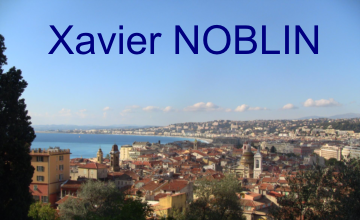

With G. Huillard and J. Rajchenbach.
|
First we
are interested in the simplest granular packing : a
one-dimensional
array of cylinders in contact. We carry out an experimental
investigation concerning the propagation of an acoustic pulse,
in both
cases where the pulse amplitude is small (linear wave), or
large
(nonlinear waves), compared to the static confining force
applied to
the chain. In the first case, we prove the prominent role played by the imperfections of the contacts on the sound celerity. We also show that the pulse damping mainly originates from dry friction. In the case of very large amplitude, the initial pulse breaks down into a wave train of decreasing amplitudes, with a width comprised between 3 and 4 grains and asupersonic speed. This speed, in units of sound celerity, depends only on the ratio of the amplitude to the static confining pressure. These observations are interpreted by generalizing the results of Nesterenko. |
| We also study the case of the two-dimensional packings. Linear sound waves propagate through the static force chains and their velocities increase with the static force in the chain. |